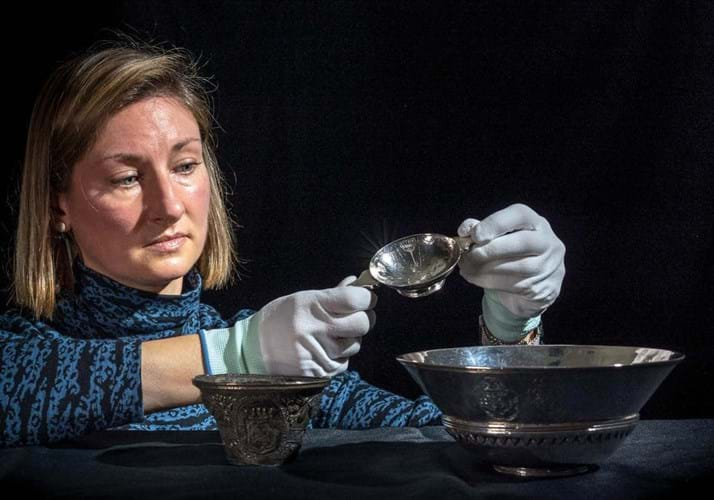
A diminutive Charles II quaich by Aberdeen silversmith William Scott, a James I mazer and the bell of a 17th century trumpet had been on long-term loan to NMS since 2004,
The Bell of Cowcaddens Mazer is the earliest of the three silver items, made by Thomas Clyghorne in Edinburgh, c.1613-15, as a communal drinking vessel.
Only nine Scottish examples are known to survive and just two made entirely from silver. This example, once owned by the Provost of Glasgow, last sold in 2008 for £80,000 (£97,250 including premium) at a Christie’s sale of silver from the collection of Lord Harris of Peckman.
The quaich is an item of 17th century luxury, remarkable for its elaborate engraving of tulips and exotic birds. It was sold at Bonhams Edinburgh for £17,000 (£19,975) in 2004.
Once mistakenly identified as the neck of a silver vase, the silver trumpet bell is now known to be the only surviving section of a long ceremonial trumpet.
This particular example embossed with the name of goldsmith Thomas McCvir Glasuae, is engraved with the coat of arms of the Cassillis family from Ayrshire and had been in the family for approximately 350 years before being sold through Edinburgh saleroom Shapes in 2009. It is one of just three Scottish trumpets from the 1600s still in existence.
Remarkable contribution
Lyndsay McGill, curator of Renaissance and early modern Scottish history at NMS, said: “Scottish marked silver from the 1600s is scarce, especially examples of this quality. We are delighted to accept this gift and thank both Rosemary Haggarty and her late husband Ron for their remarkable contribution.”














